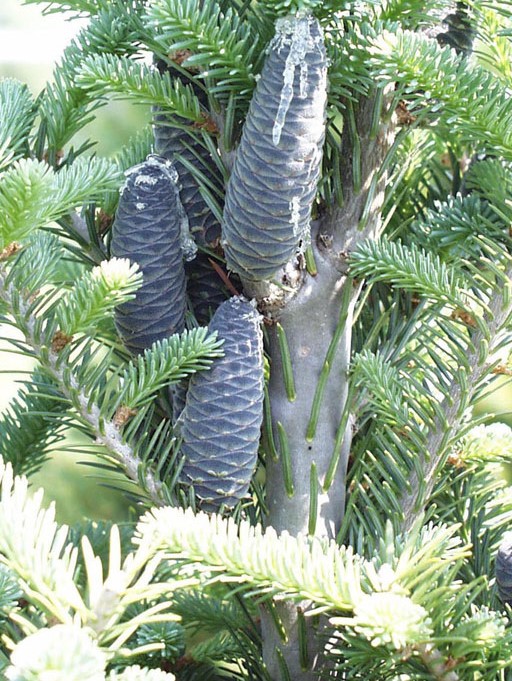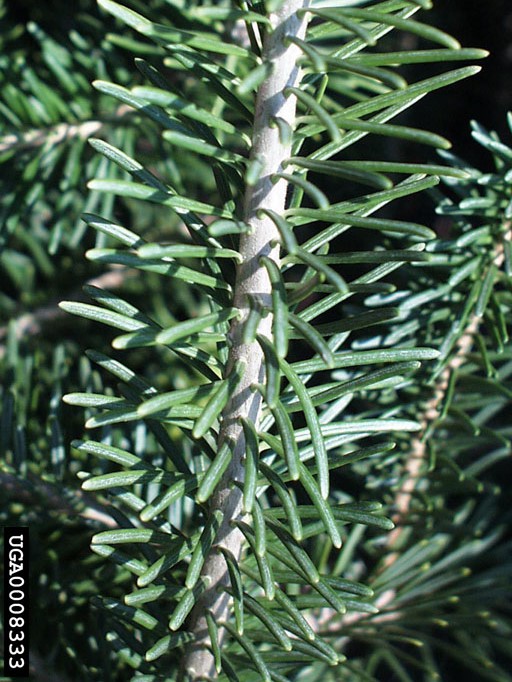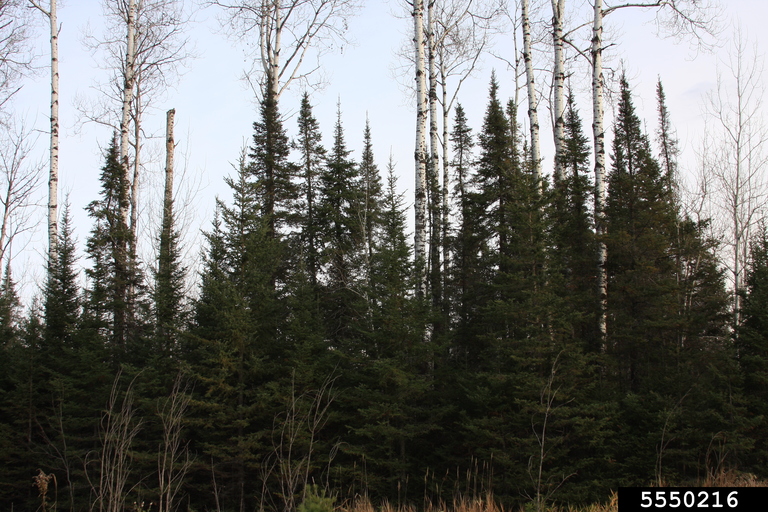11/5/2019
By: Dan Petters
Balsam Fir (Abies balsamea) is Minnesota's only native fir! It features a beautiful pyramidal form and is found as a large component of boreal forests in the northern half of the state (and into Canada and the northeastern US), as well as in a few colder patches in southeastern Minnesota. Moist and acidic sites are preferred, and it will tolerate many more consistently wet sites. It is very shade tolerant and often begins its life cycle growing in sometimes dense patches of the understory, eventually growing into the overstory at 50-70 feet, occasionally topping 90 feet. The cones are purple to brown with appressed scales, very sticky when mature, and upright, as with all firs. Needles are dark green and flat, arranged around the stem, giving twigs a bottle-brush like appearance. In low light conditions, they often splay out horizontally, allowing them to catch as much of the available light as possible. Grey bark features numerous resin blisters which may squirt out when punctured, occasionally into your (friend's) face and eyes.
Balsam Fir is one of a couple classic christmas trees often found on tree farms and lots, known for its very appealing fragrance and long needle retention after cutting. Its evergreen needles and conical form make it an appealing tree for garden and other ornamental plantings, though it is generally not very tolerant of urban conditions and pollutants, nor very hot and humid summers. In the forest, it is an important winter deer browse and general cover, and it is an important tree for pulpwood and sometimes dimensional lumber. It is susceptible to spruce budworm outbreaks, but generally has no serious pest or disease issues.
References:
Abies Balsamea. Minnesota Wildflowers. Accessed November 5, 2019. https://www.minnesotawildflowers.info/tree/balsam-fir
Abies Balsamea. Missouri Botanical Garden. Accessed November 5, 2019. https://www.missouribotanicalgarden.org/PlantFinder/PlantFinderDetails.aspx?taxonid=284972
Balsam Fir. The Morton Arboretum. https://www.mortonarb.org/trees-plants/tree-plant-descriptions/balsam-fir
Images:
Steven Katovich, Paul Wray, Iowa State University, Bugwood.org


